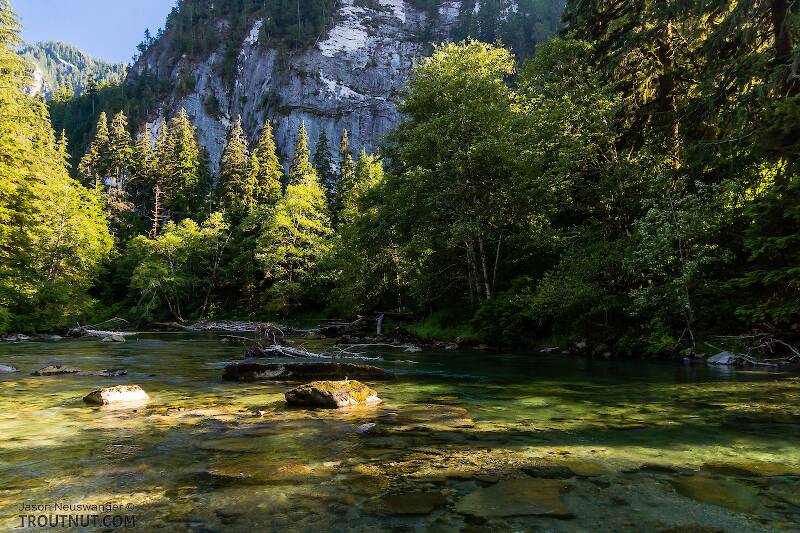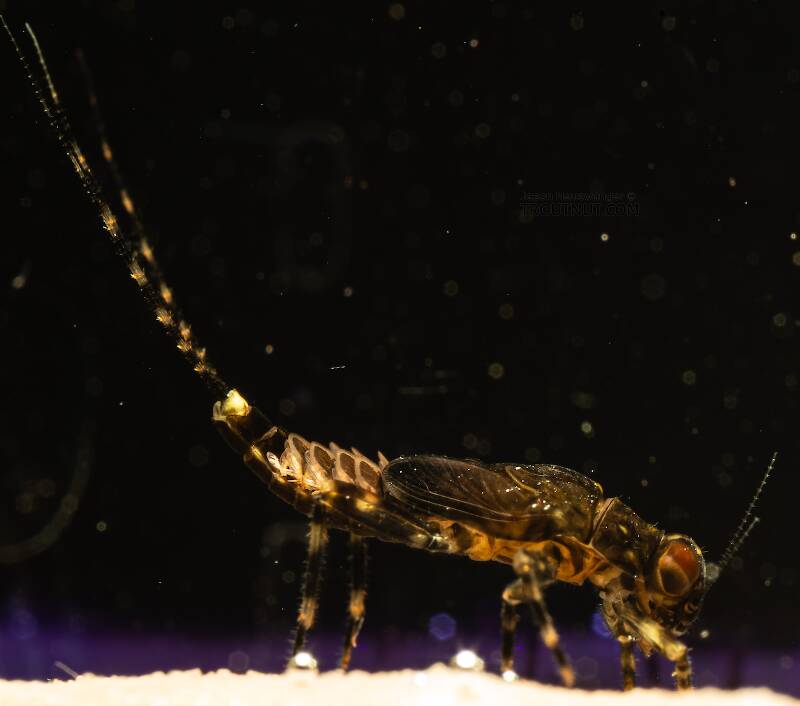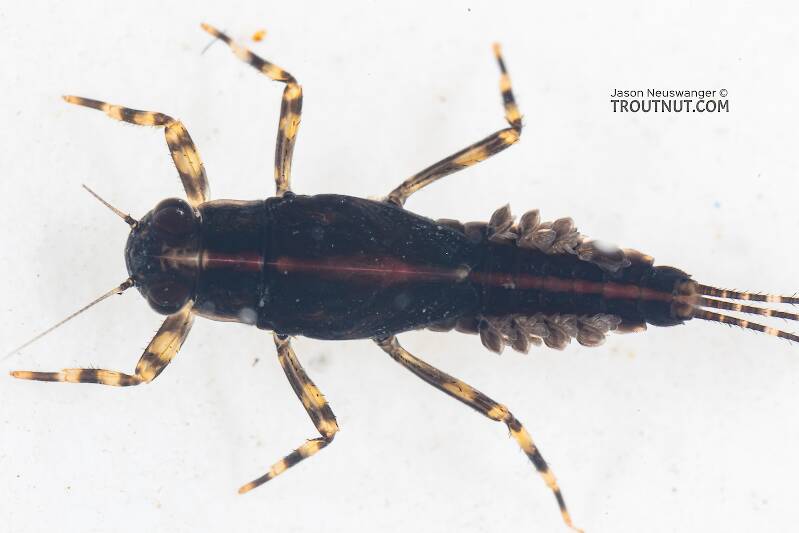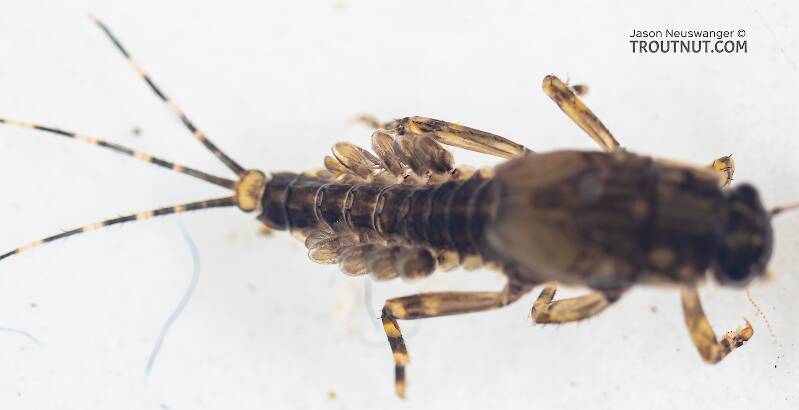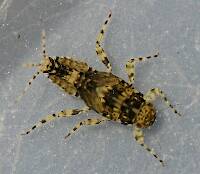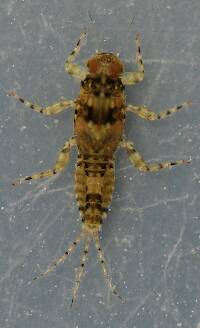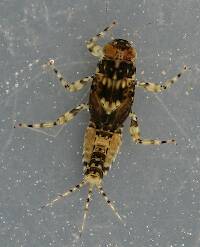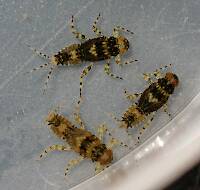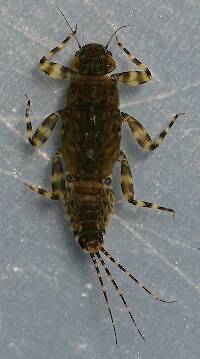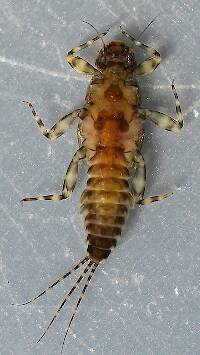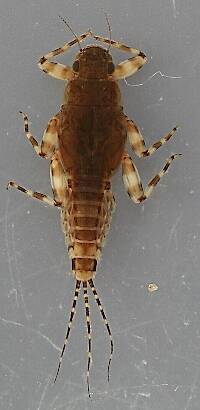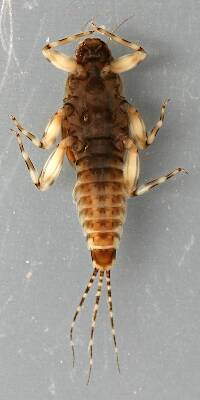
Blue-winged Olives
Baetis
Tiny Baetis mayflies are perhaps the most commonly encountered and imitated by anglers on all American trout streams due to their great abundance, widespread distribution, and trout-friendly emergence habits.
Featured on the forum

This dun emerged from a mature nymph on my desk. Unfortunately its wings didn't perfectly dry out.

Troutnut is a project started in 2003 by salmonid ecologist Jason "Troutnut" Neuswanger to help anglers and
fly tyers unabashedly embrace the entomological side of the sport. Learn more about Troutnut or
support the project for an enhanced experience here.
This topic is about the Mayfly Genus Serratella
Prior to recent revisions, this genus of elegant little dark mayflies with their small dark bodies, dark slate wings, and paler legs and tails was more important to anglers. What was the East's most significant species is now known as Teloganopsis deficiens (Little Black Quill). The only remaining species reported of value to the eastern angler is Serratella serrata (Little Sooty Olive).These changes have had an even bigger impact in the West. The significant Summer hatching tibialis has been moved back to its old genus and is again called Ephemerella tibialis (Small Western Dark Hendrickson). The next most prominent species (though of only minor importance) is now called Matriella teresa and is the only recognized species of that genus in North America. The very minor species velmae has also been moved, and is now back in Ephemerella. This leaves only a few western species in this genus, and they are of no reported significance to anglers.
Example specimens
Goose
Posts: 77
Posts: 77
Goose on Oct 4, 2006October 4th, 2006, 1:20 am EDT
Jason: I was fishing in Central PA with a buddy on Sunday and we collected 2 different BWO species from the water. A really small one, about 22 to 24, had an olive/gray body. The other, which was about a size 20, had a gray body and thorax and was matched well with natural beaver fur. I don't know the names, of course, but I saw them with my own eyes. We did well fishing an emerger/dun pattern in sizes 20 and 22. We tied some with trailing shucks of amber or dun. We used a light olive thread for the body, sparse gray beaver dubbing for the thorax, and dun snow shoe for the wing.
Troutnut on Oct 4, 2006October 4th, 2006, 4:45 am EDT
Yeah, BWOs certainly aren't unusual at this time of year... they provide some of the best fishing we've got left. Several species in the Baetidae family are still going strong. What's strange is finding one in that size range in the Ephemerellidae family.
Jason Neuswanger, Ph.D.
Troutnut and salmonid ecologist
Troutnut and salmonid ecologist
Quick Reply
Related Discussions
Topic
Replies
Last Reply
1
Oct 24, 2006
by Troutnut
by Troutnut
5
Jan 10, 2017
by Martinlf
by Martinlf

